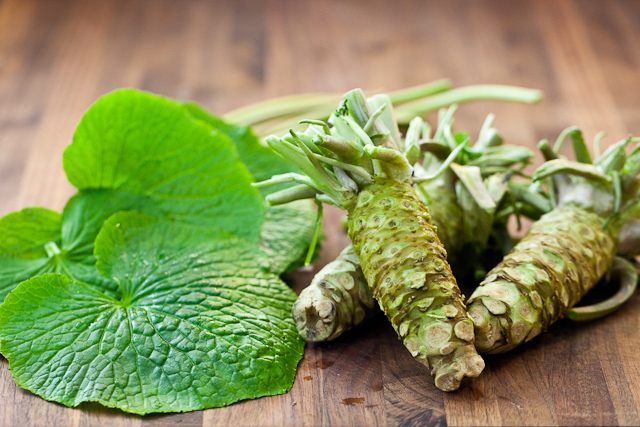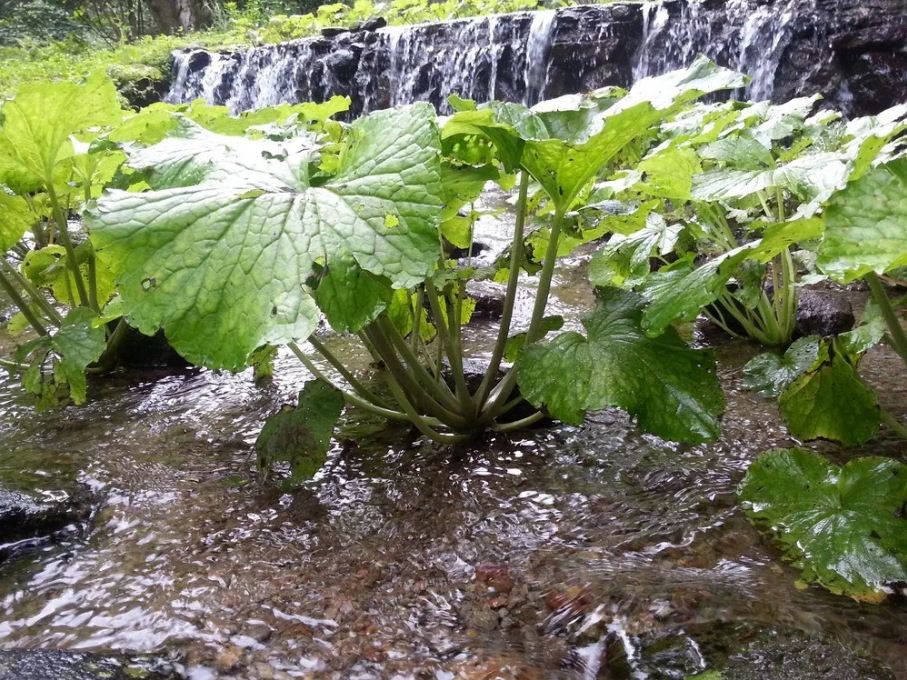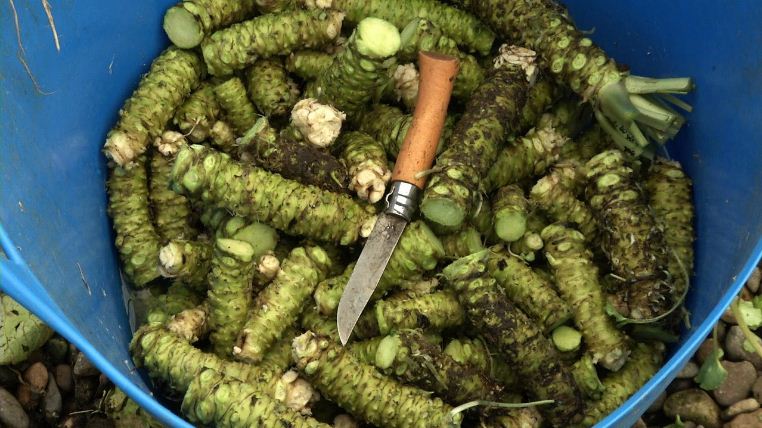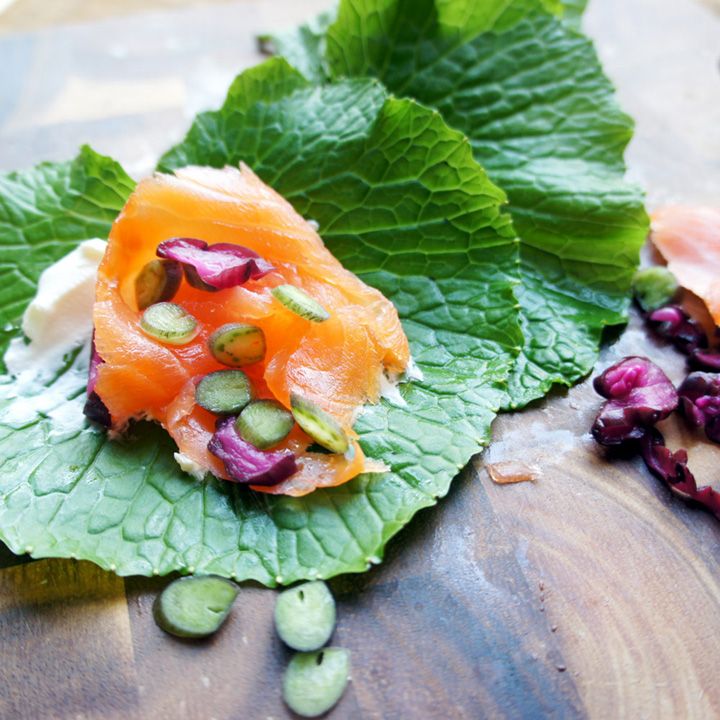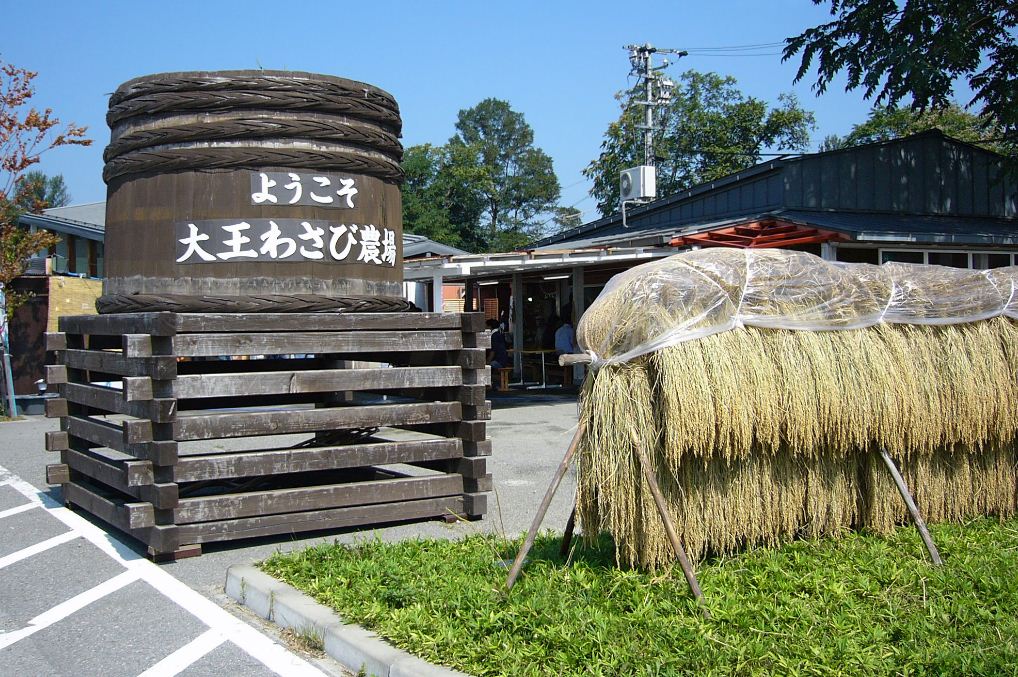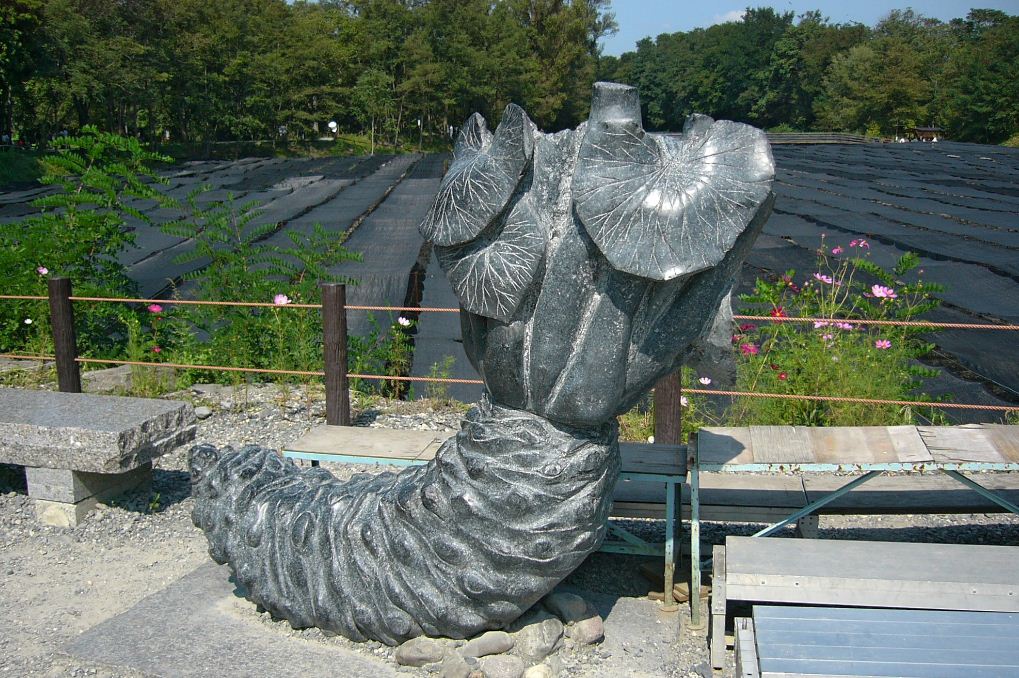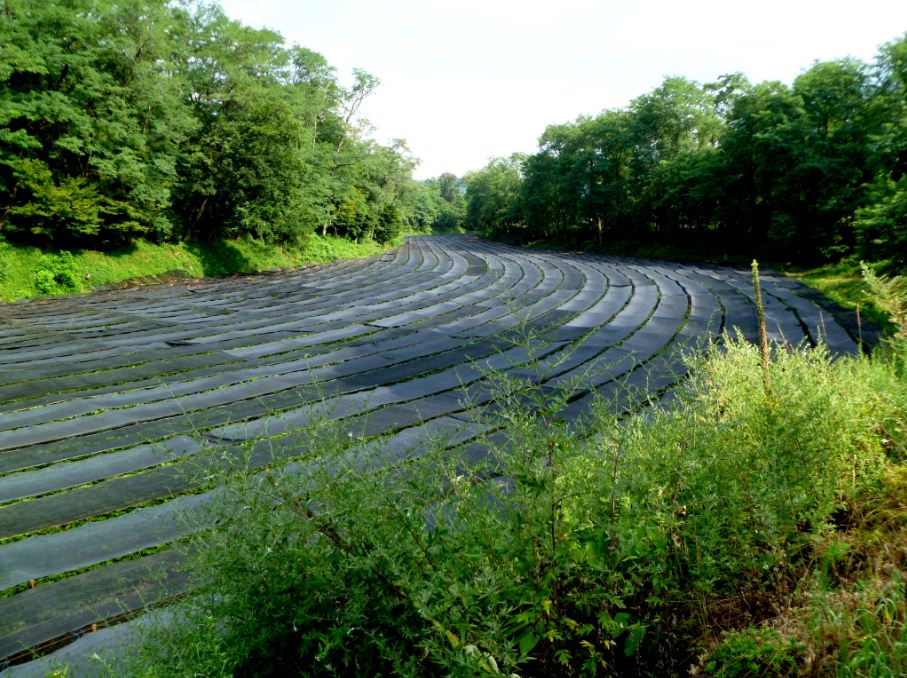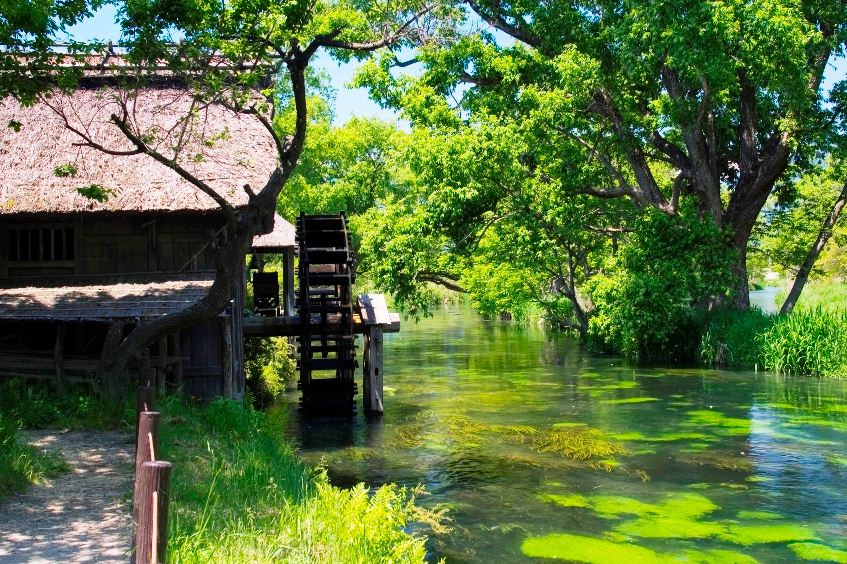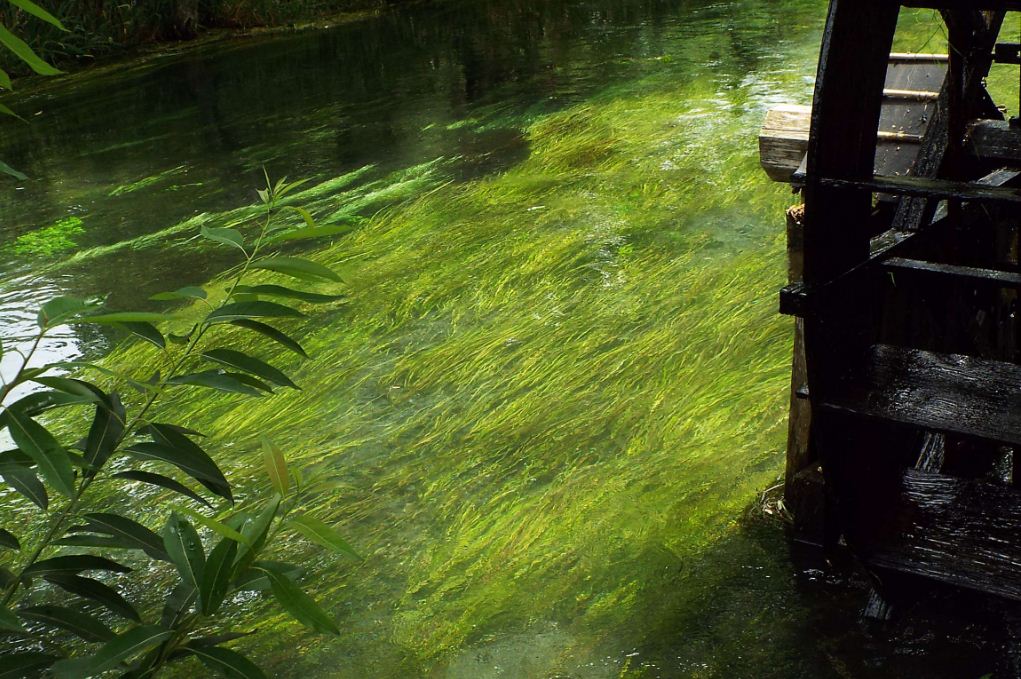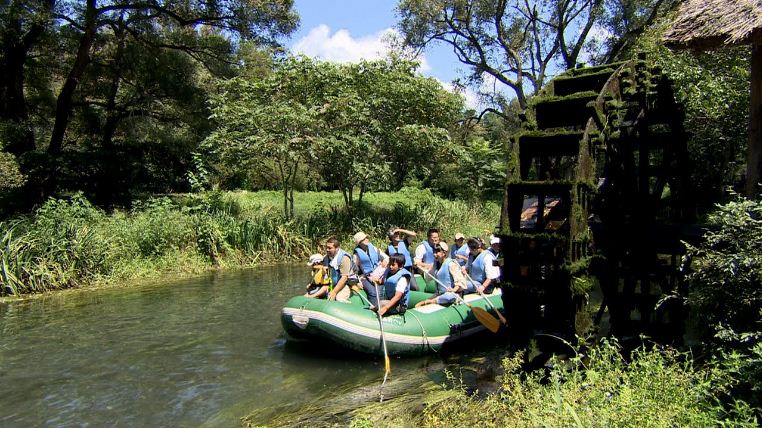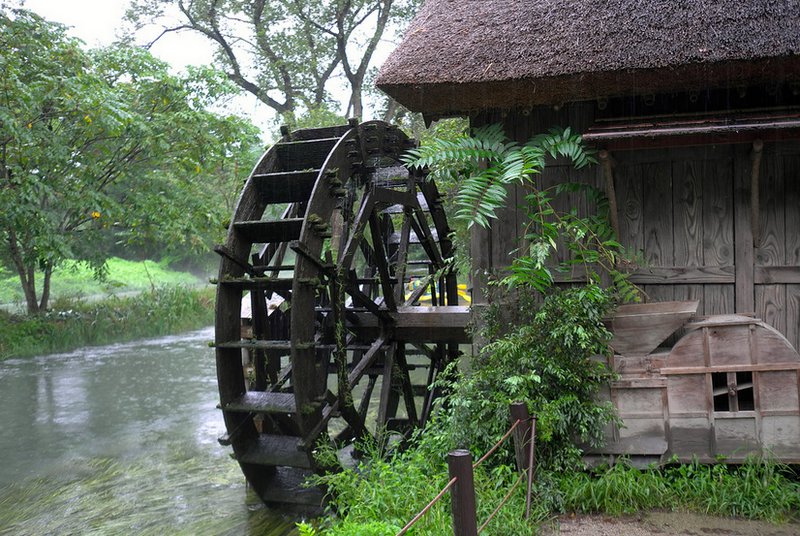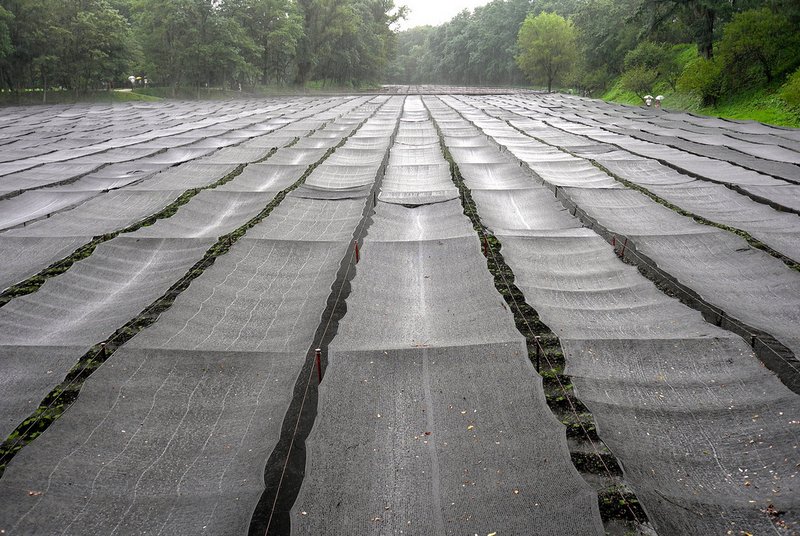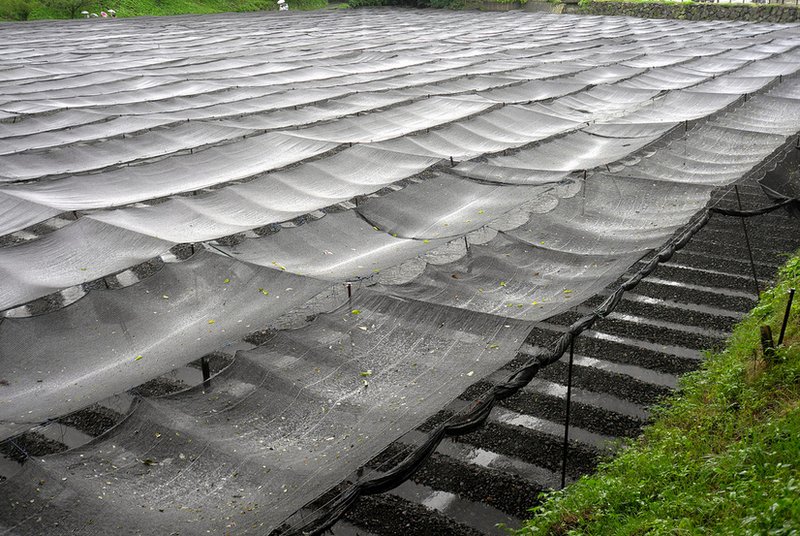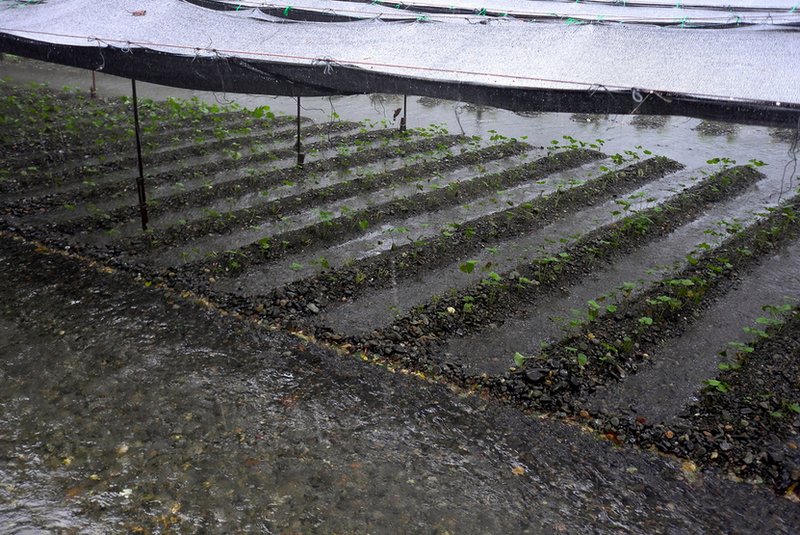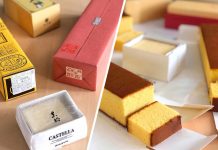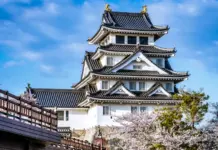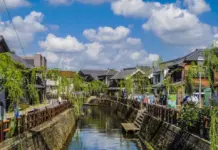Japanese Wasabi is one of the most unique spices in Japanese cuisine and the world cuisine with its hotness spicy flavor enhances the taste of the dish. Wasabi is a product with a paste, green color which made from the stems of Wasabia Japonica plants, also known as Japanese horseradish and Wasabi Koreana, Wasabi Tesuigi, of the cabbage family. Wasabi does not have a spicy taste but has a hotness spicy flavor shove the noise depending on the amount of used. Its hotness is more like hot mustard or horseradish than chili pepper, because it irritates the nose more than the tongue. If you eating unfamiliar, diners feel uncomfortable. But when used to eat sushi, fresh shrimp chilled without it, the taste is greatly reduced. But eating too much wasabi can cause a very painful feeling in the nose.
- Best street food places in Tokyo: 8 Night Markets & best food streets in Tokyo You Can’t Miss
- Best Omakase in Japan: What’s it, How to Experience, Price & 10 Best Omakase Restaurants in Tokyo and in Japan
- Best restaurants in Tokyo: 15 Tokyo’s Famous Restaurants with Delicious Food & New Experiences
- What to Eat in Japan? 29+ most popular, traditional & must try foods in Japan
- 11+ most famous & must try food in Hokkaido and where to find them
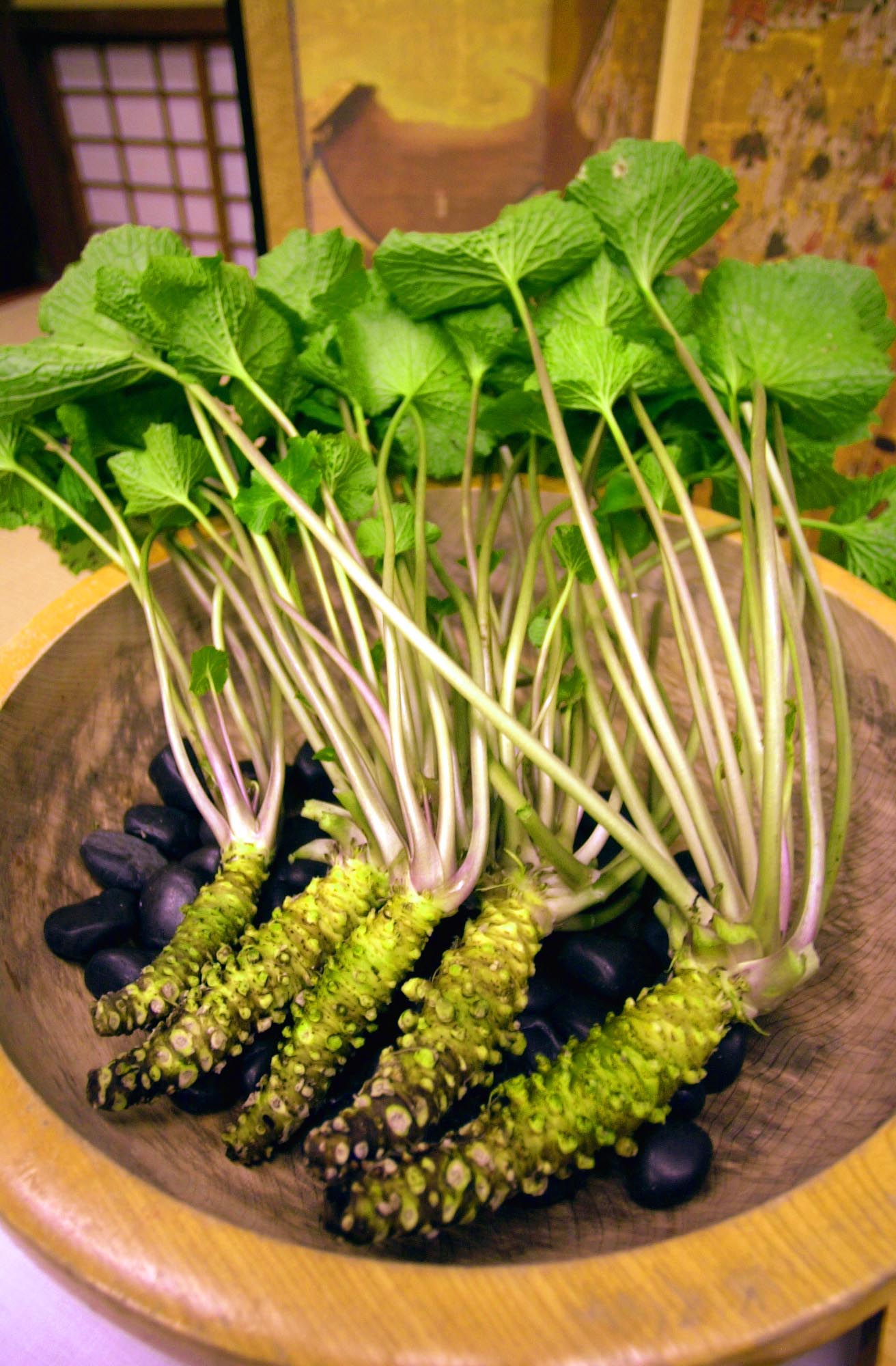
Wasabi health benefits
The recent studies have shown that Wasabi contains natural chemicals that work against some of certain cancer cells. This vegetable can also be used in hygiene and prevention of oral infections, diarrhea, osteoporosis, asthma, arthritis and allergies. In addition, Wasabi can prevent cardiovascular diseases such as stroke, hypertension and heart disease.
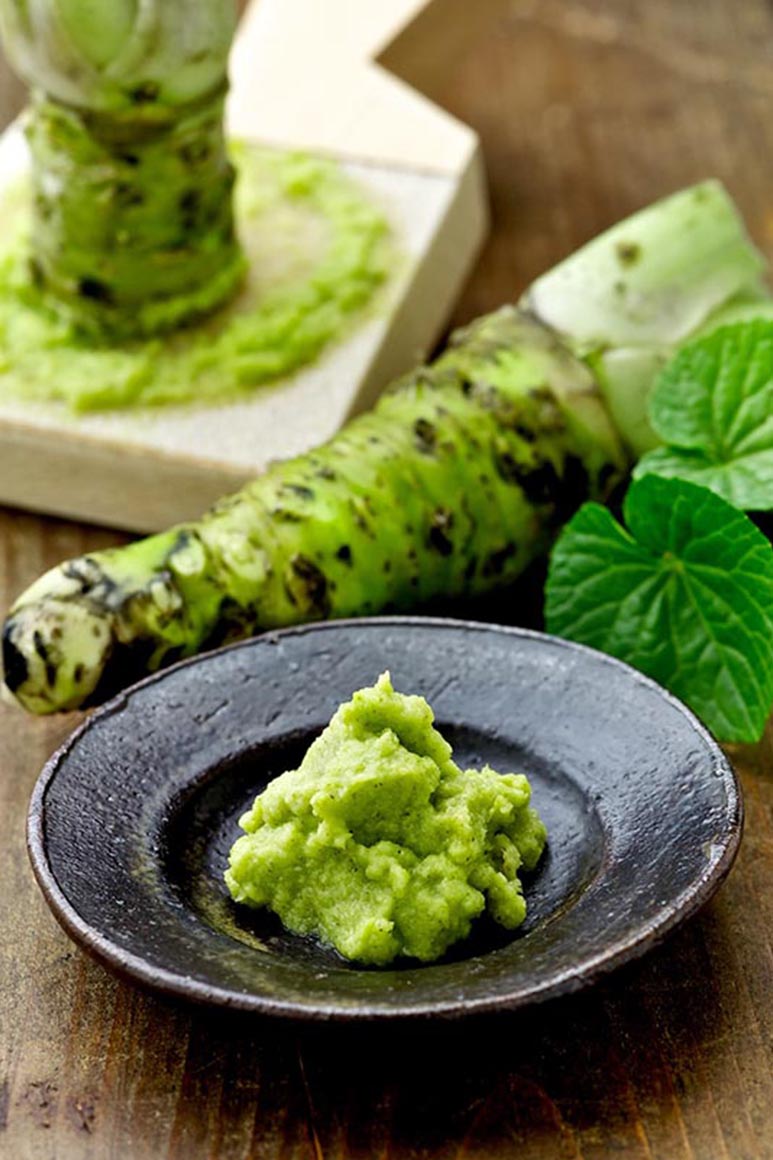
Wasabi contains many biological active ingredients, which can:
- Eliminates harmful bacteria in food, probably because of it is used as a bactericidal food in sushi dishes.
- Decrease blood pressure
- Killing cancer cells
- Improve bone strength
- Improve liver function
- Detoxify the body from free radicals, anti-aging
- Improve bowel function
- Antibacterial, antiviral, anti-inflammatory
- Stimulates the natural immune system.
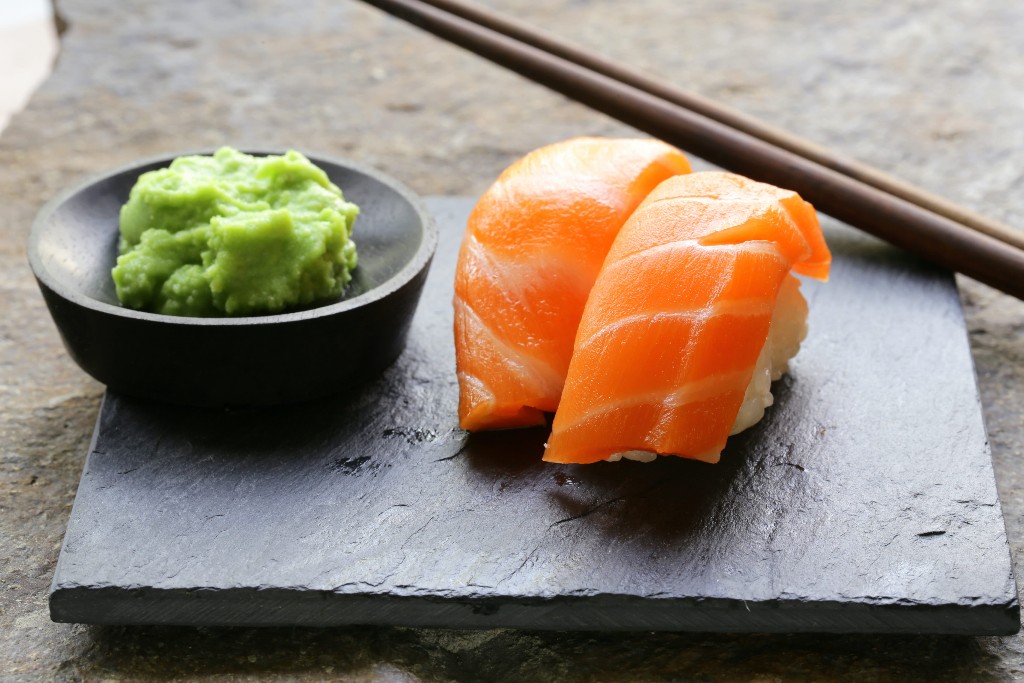
History of Wasabi
Japanese Wasabi has a long history, which was recorded by humans on wooden engravings dating from around the year 685 BC. It was originally used as a herb, but in the Kamakura period (from the end of 12th to 14th century) it is used as a spice.
Around the year 1600, farmers in the county of Utougi, for the first time trying plant a strange plant species which they already knew as a wild vegetable that was used to make pickles nearby Shizuoka station along the Abe river. At that time they only processed stems, petioles, leafs and flowers. Currently, wasabi is still a popular pickles in Shizuoka, where they are sold seasonally.
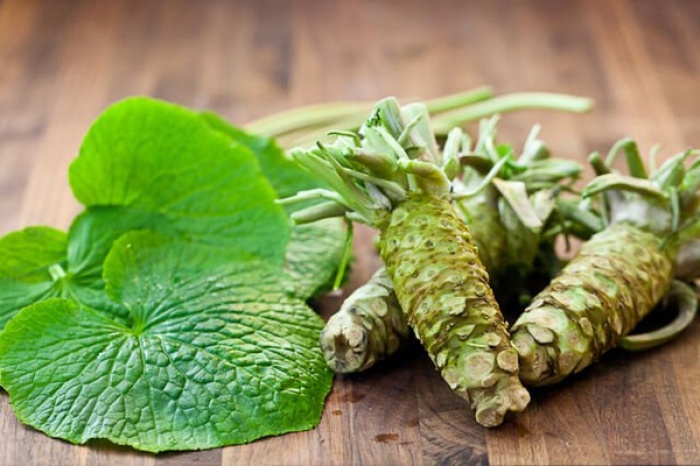
In 1604, Tokugawa Leyasu, a Japanese warlord who had just moved to Sumpu (now is Shizuoka), was extremely interested in the taste and flavor of the finely grated make from stems of Wasabi plant and has contributed to the spread of this dish throughout Japan. The planting of this plant has now gone beyond the region, especially in Nagano, but Shizuoka still produces not only 80% of Japan’s production, but also the best type of Wasabi grown in Utougi and Amagi belonging Izu peninsula.


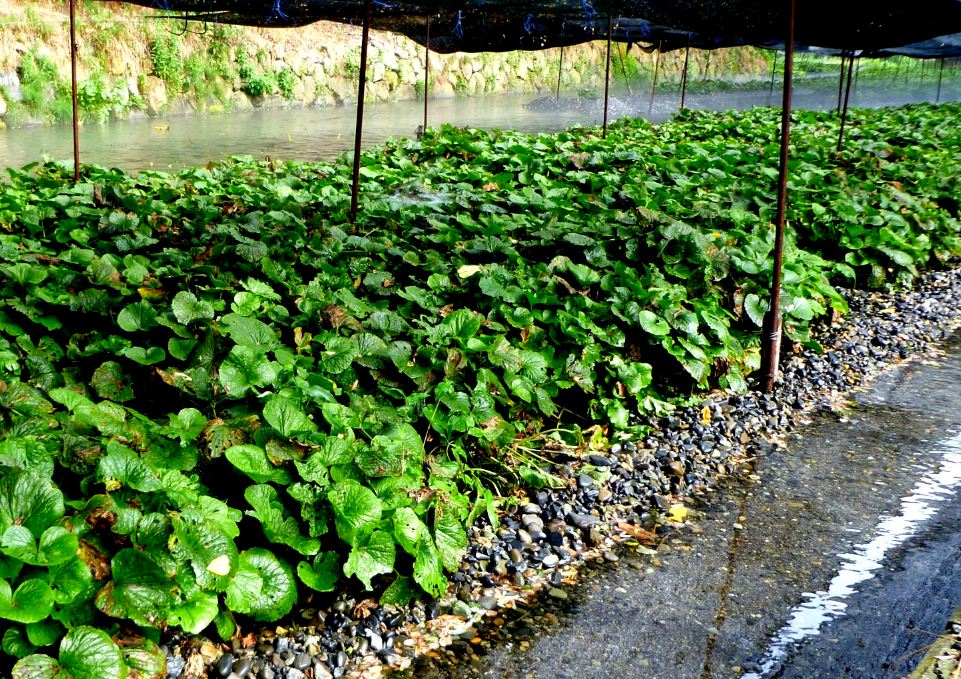
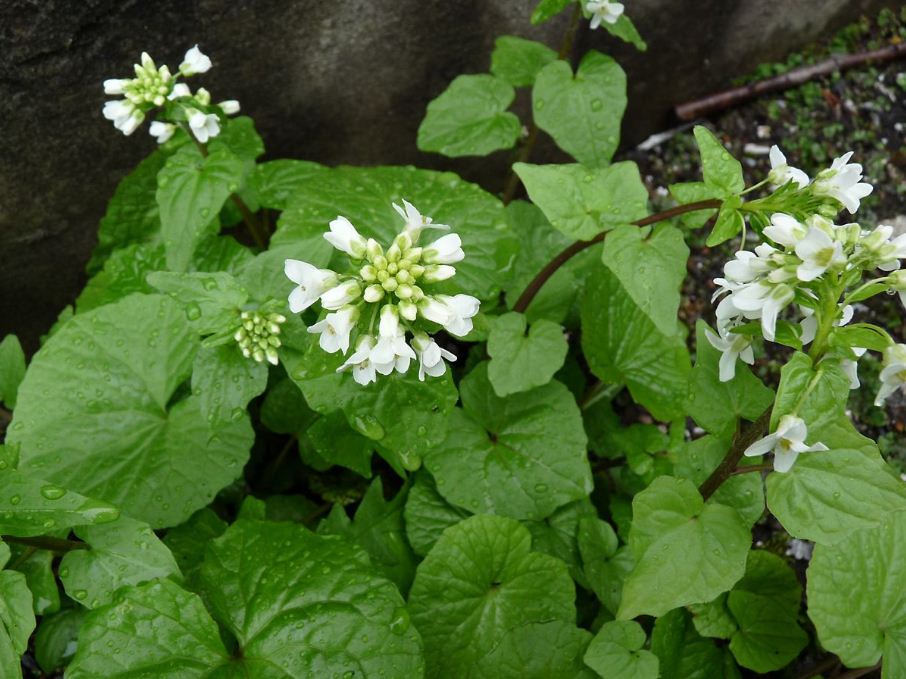
If you want to visit Utogi village in Shizuoka, where you will find many restaurants and other shops as well as want to attend the festivals in April and October, you can go to by car (55 minutes) or by bus (75 minutes from Shizuoka station). A boat trip on the Abe river is also worthy because you can enjoy sake wine and enjoy the view.
The first and oldest Wasabi store in Japan is Tamaruya, which is still trading a lot of Wasabi in Shizuoka City and also has a shop at Haneda Airport, Shizuoka city.
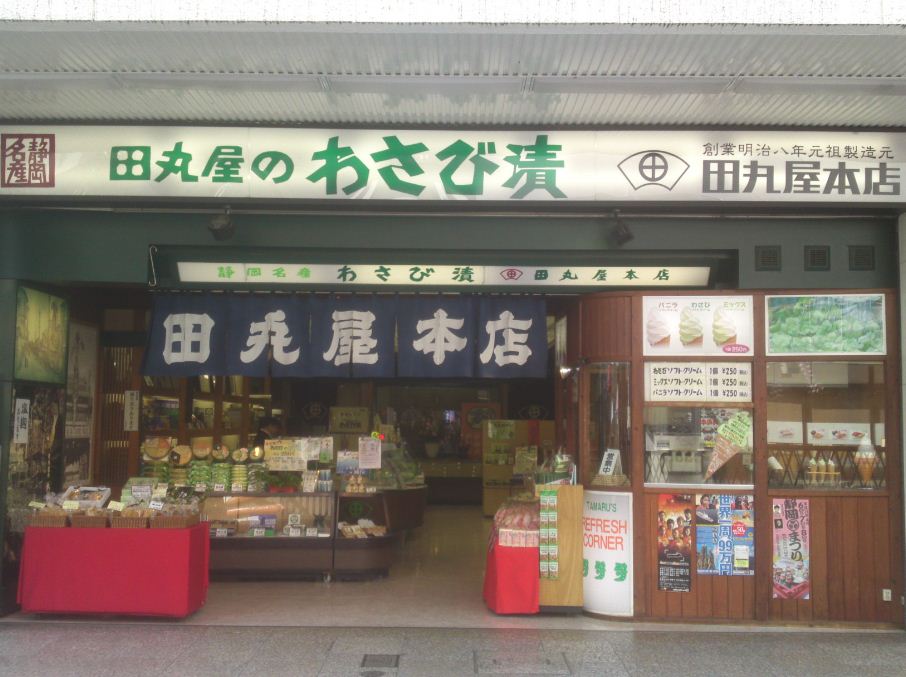
How to grow Wasabi?
Wasabi is very difficult to grow. Wasabi is not only has unique flavor, this plant is also one of the hardest to grow in the world, especially difficult to grow at a large scale. The reasons are listed below:
The planting: Wasabi grows unlike any other plant species. It needs a lot of water but not flooded in water like lilies, lotuses and not much exposed to the sun, at a suitable height (up to 1,000 meters). Water must flow frequently, soft, purity is required. It can be said that water must always flow through Wasabi plants. Water in Shizuoka is the best in Japan as evidenced by its rare premium sake wine. You can drink water directly at wasabi gardens without having to worry about anything.
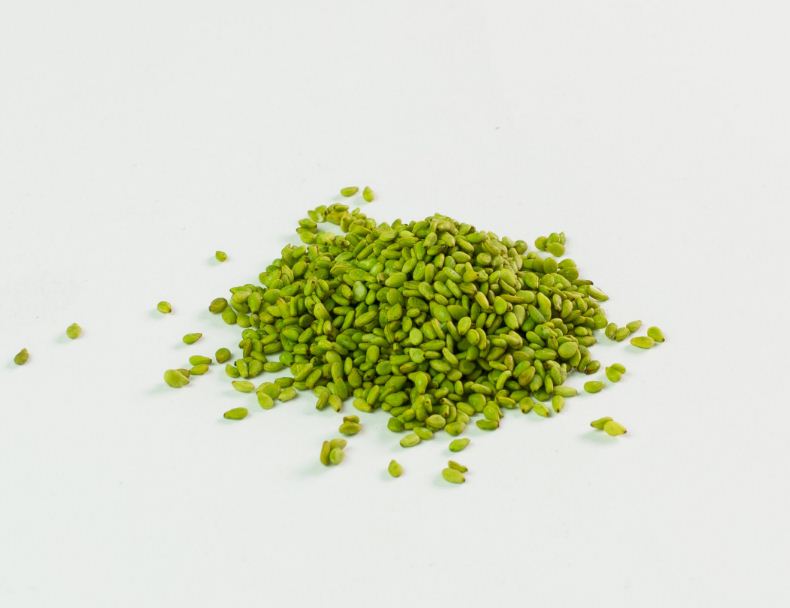



A farmer said, it took 6 years just to be able to grow Wasabi seeds. They have to work very hard to building gravel beds for Wasabi plants, turned the water stream flows through the beds of wasabi and shielding the sun with black nets. And Wasabi plants also took more than a year to full-grown, which also means that farmers have to wait very long to be able to harvest and make money from them.
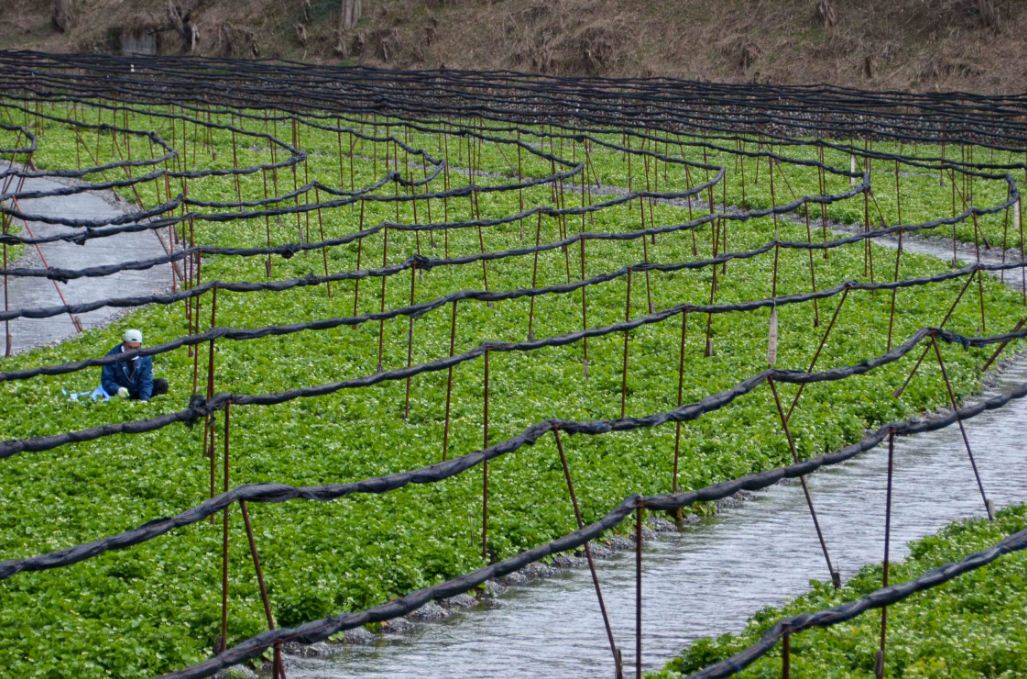
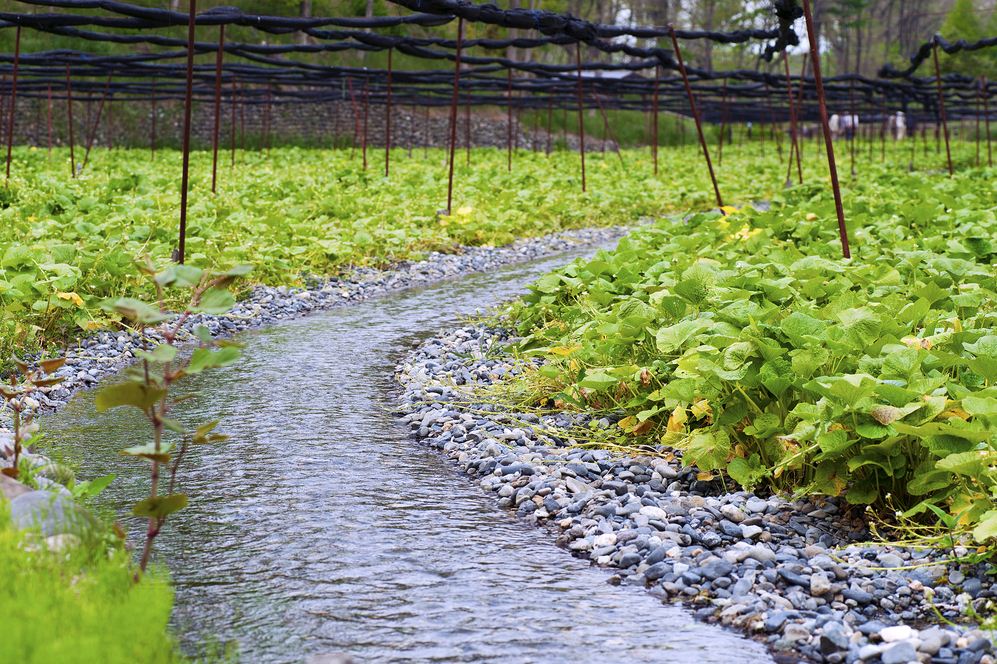
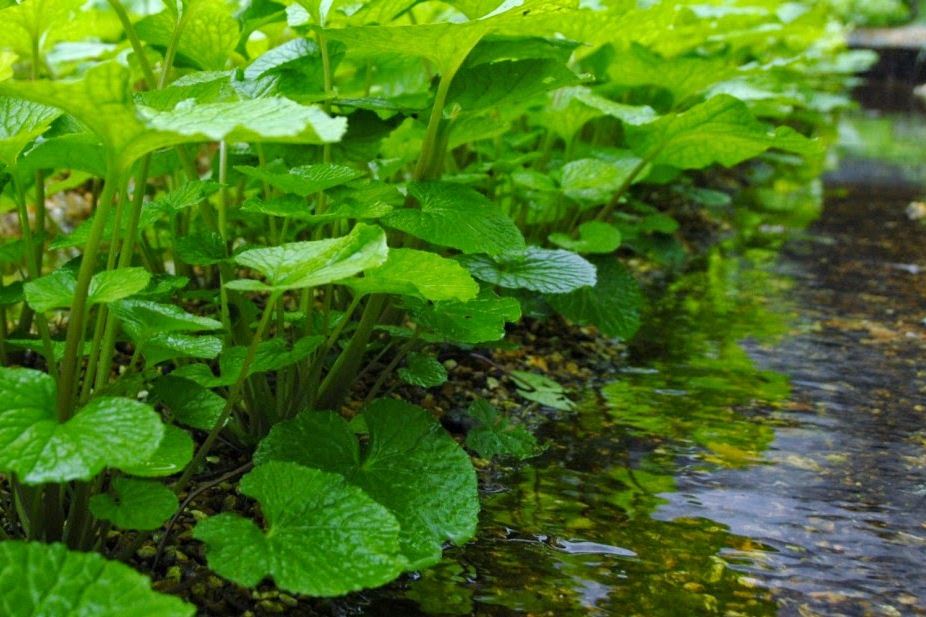
The temperature: The air is too moist or the nutrients in the soil are unsuitable can killing the entire wasabi beds.
The scale: Wasabi is very susceptible to pests if planted at a large scale. Most farms also try growing wasabi but almost failed, only very few could get rich from it. This is also one of the most attractive species of plant on the planet.
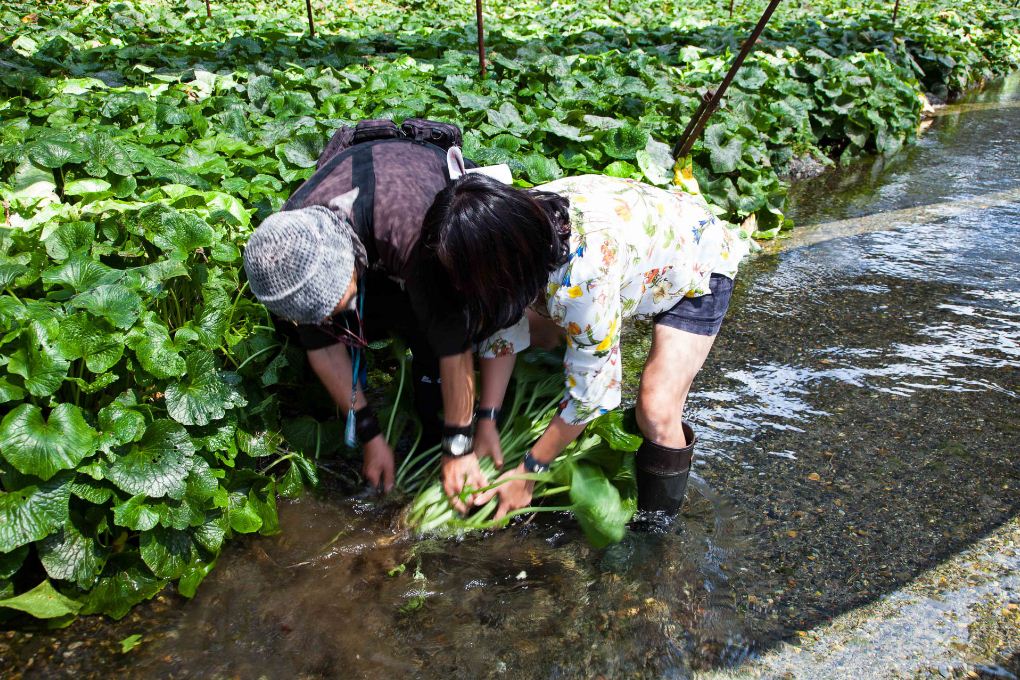
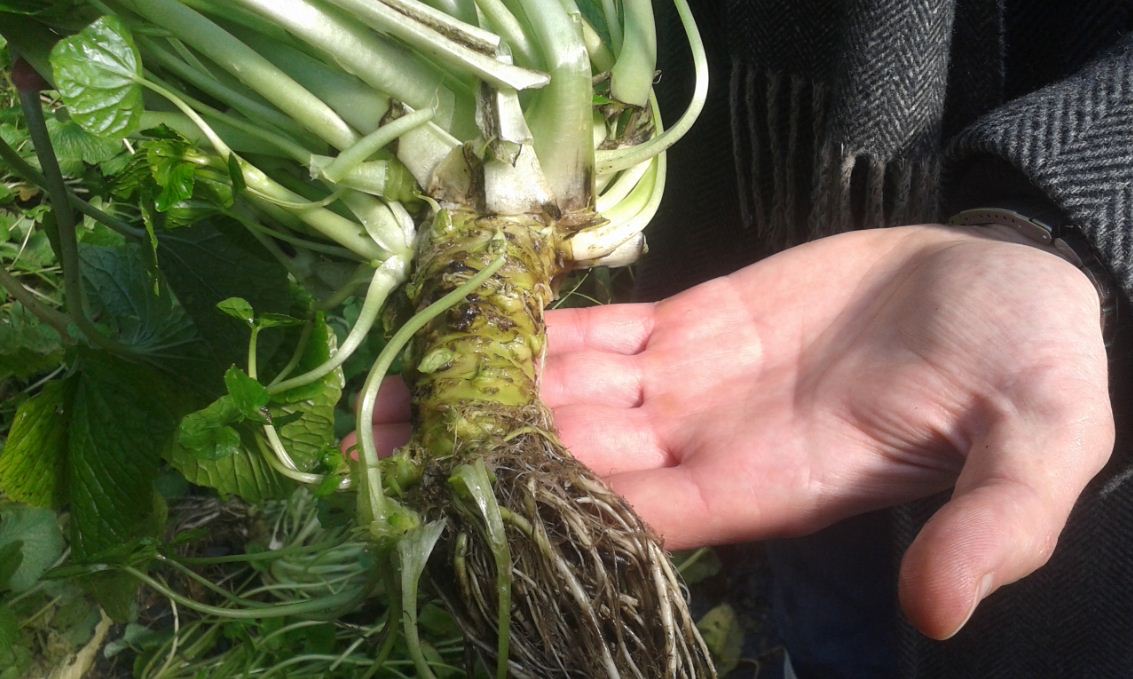
A statistic shows that only 5% of restaurants around the world have been serving the real Wasabi for diners — from the roots, stems or leafs of Wasabi plants. When you dining at any Japanese restaurants around the world, you will find fresh Wasabi, light green and much better flavor than Wasabi which commercially available in the dark green tubes at Vietnamese seafood restaurants. Simply, It’s fresh wasabi is directly finely grated from the stems of Wasabi plants with a wooden utensil which can eating directly and do not need add any ingredients anymore.
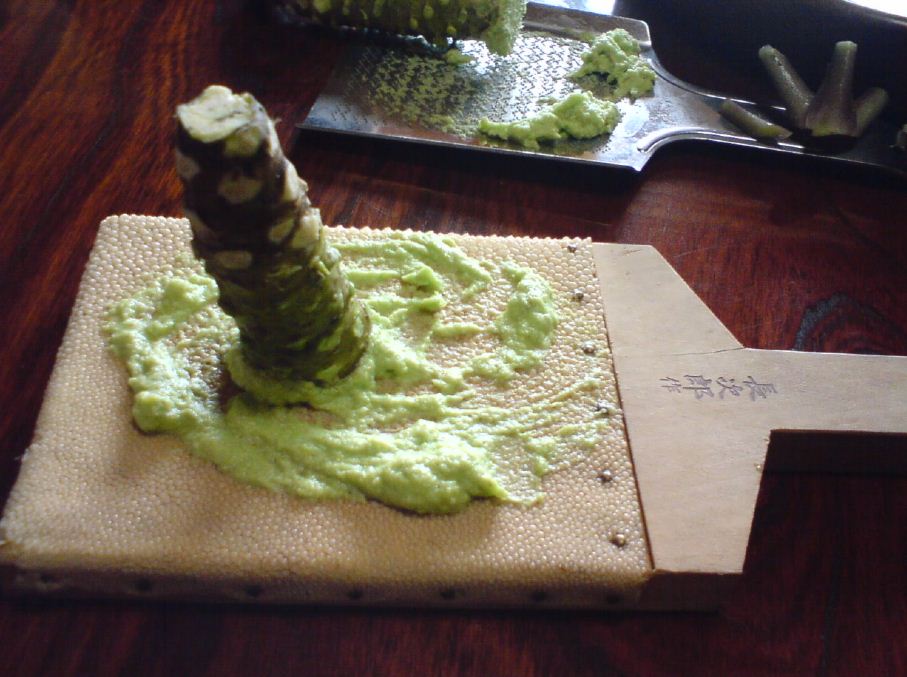
The remaining 95% of restaurants used Wasabi made from horseradish, color, powder and artificial spices. A lot of Wasabi tubes in the market are artificial. Wasabi will losing most of its flavor when exposed to the air for a short time, so the Wasabi paste in the tubes contained horseradish and other ingredients to create irritation of the nasal similar to fresh wasabi.
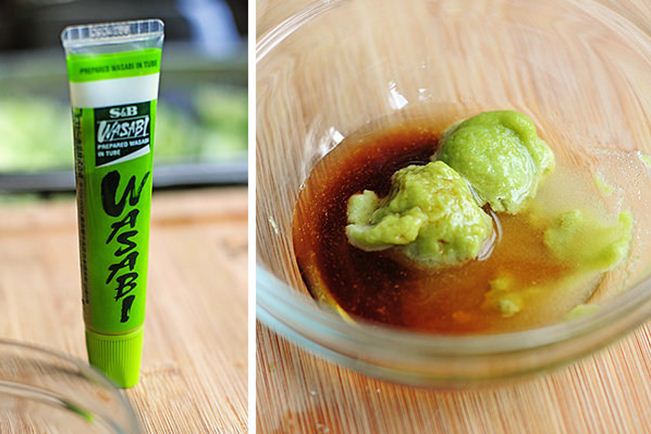
Wasabi dishes
We often see Wasabi in food as sauce which is finely grated from the stems of Wasabi plants (or sauce in tubes at stores). In fact, most of parts of the Wasabi plants are usually utilized. The petioles, leafs, and flowers of wasabi plants are used more widely than stems (because they are rather expensive and few).

Normally, the slices of Wasabi stems does not has taste as strong as finely grated Wasabi. To tasting the best of Wasabi stems, you need a tool for grinding, the best thing is a wooden utensil with shark skin attached to surface to grate Wasabi.
The finely grated Wasabi from stems is most popular used of Wasabi plants, especially in Sashimi and Sushi dishes. Wasabi is a great addition ingredient to soy sauce and has an antibacterial effect that protects against food poisoning, so it is appropriate to eat with fresh fish like Sushi and Sashimi. Leafs of wasabi can be eaten raw and are very suitable for Miso soup or salt sour and used in the Zushi Inari dish for those who love vegetarian. The petioles is used to make pickles, is pickled from rice vinegar. The petioles and flowers also used to mix with the white mayyonaise to make Wasabi Zuke dish quite delicious and popular.
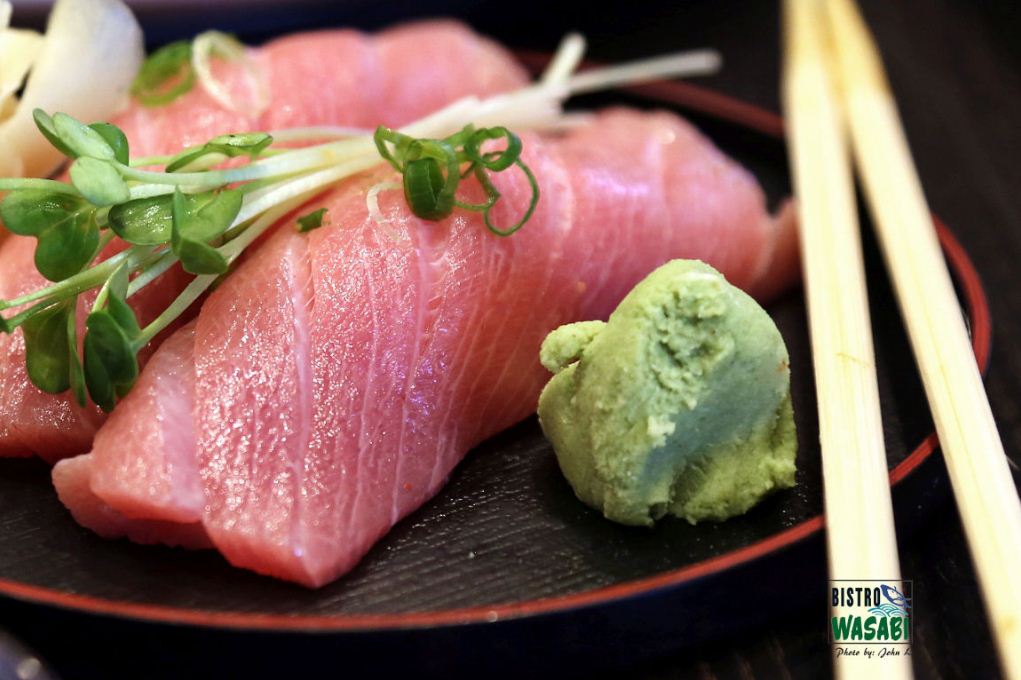
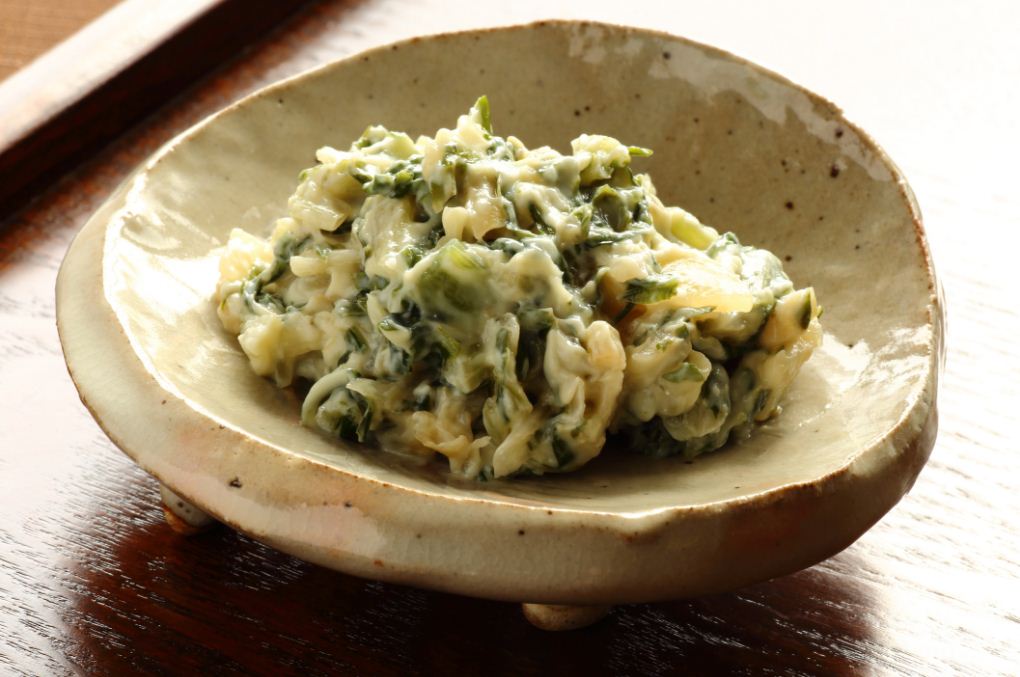
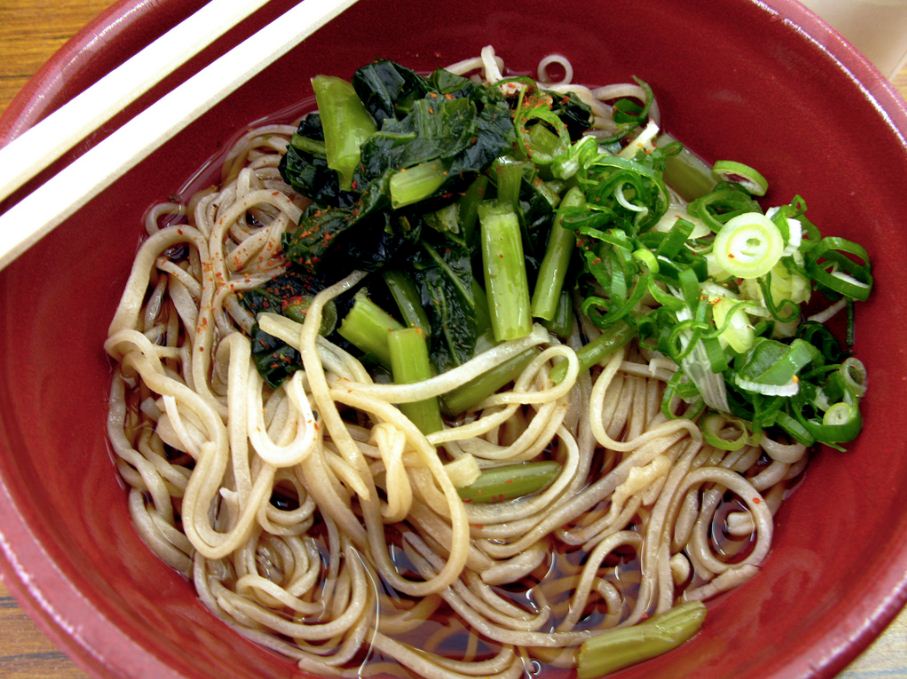
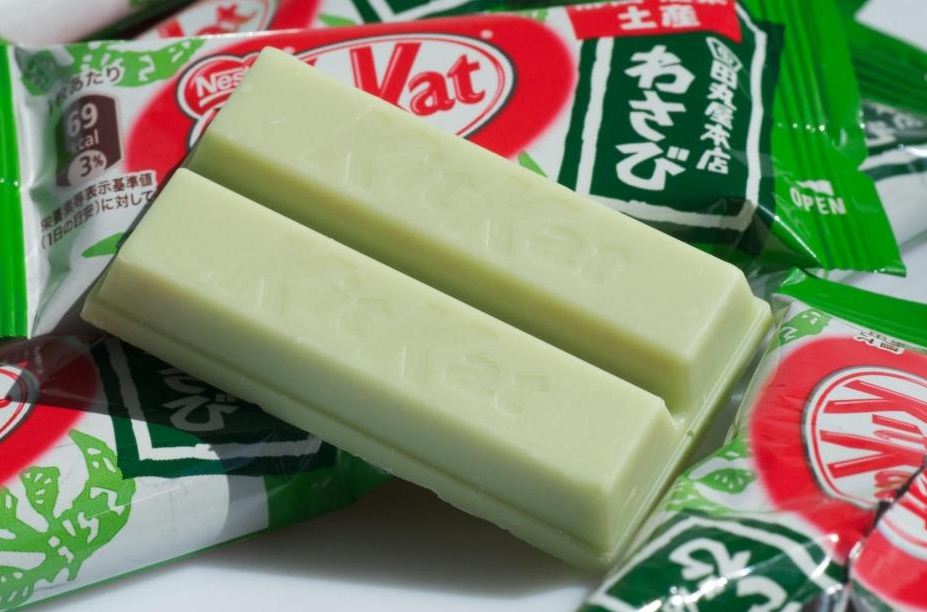
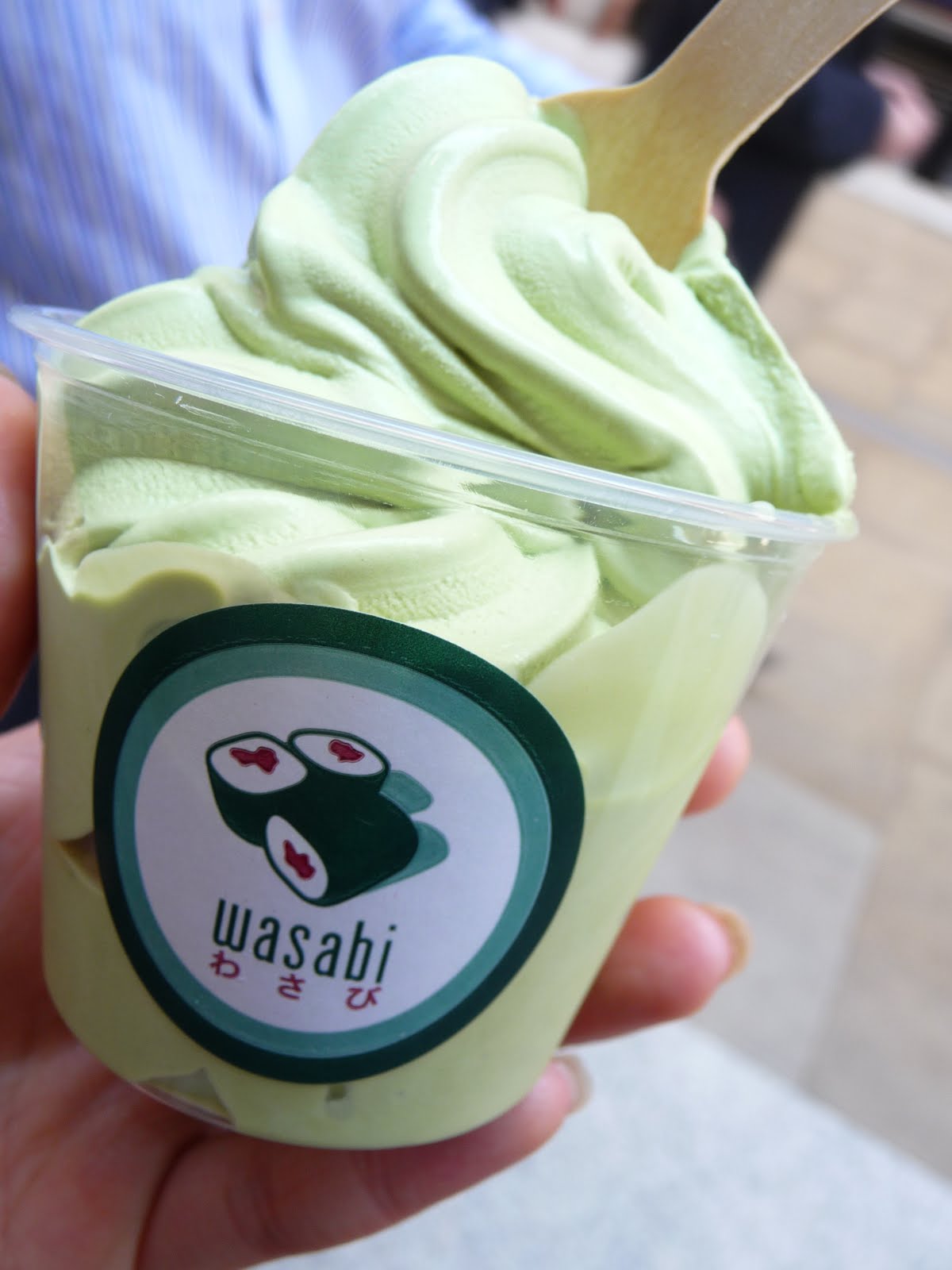
Wasabi is also a great addition to Western food. For example, it is served with beef and beef steak and used to add flavor to pasta.
Visiting Daio Wasabi Farm
In Japan there are many Wasabi plantations, but the most famous is Wasabi Farm, also known as Daio Wasabi Farm in Azumino City, Nagano Prefecture, Japan because this is Japan’s largest Wasabi Farm with scale area 15 hectares and also is a popular tourist destination. Visiting to Daio Wasabi Farm, visitors will understand about the indispensable spice of Sushi and Sashimi dishes.
Daio Wasabi Farm was once the scene in the Dreams film in the 1990 directed by Akira Kurosawa with a romantic river, beautiful wooden water wheels… Japanese farmers also have turned their farms into a lovely park when intermingled Wasabi fields are the gardens, statues, flowers, long and winding roads make tourists want to wandering more to take pictures forgot about time and way back. Therefore, the experiences of rural tourism and explore local Japanese products are most favorite for tourists, especially for Taiwanese and Thai visitors.
Especially, coming here visitors also to admire the wooden water wheels along the river Abe, a picture of rural folk from old times. These water wheels were built in 1989 to set the scene for “Dreams” movie of Kurosawa Akira director, and have been kept until now. Visitors will be able to visit the farm scene by going on inflatable boats at a cost around 900-1800 yen for 15-30 minutes. These things that made Daio Wasabi Farm as a lovely park with various landscapes to attract tourists.
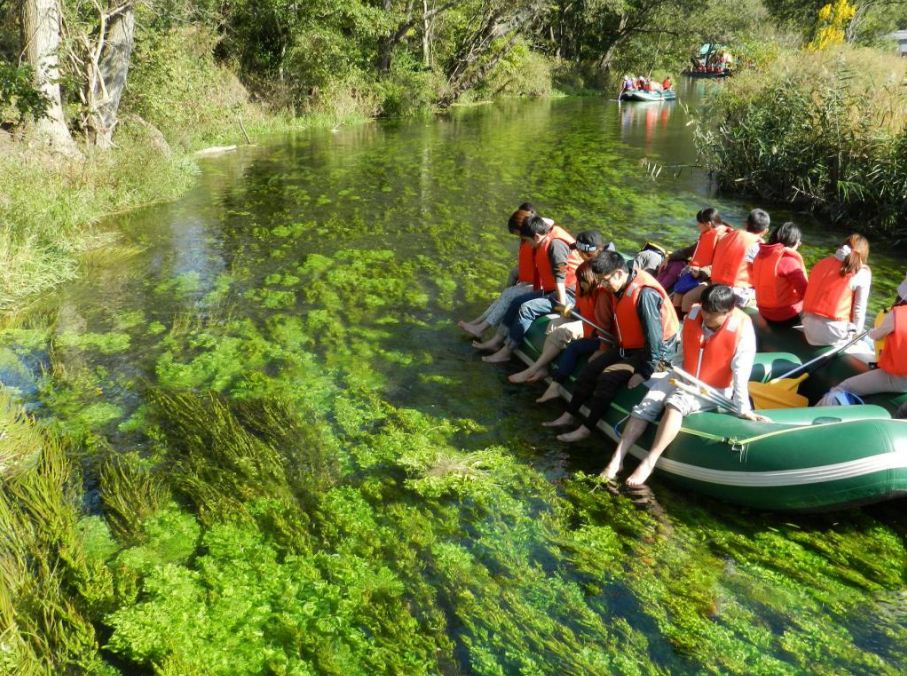
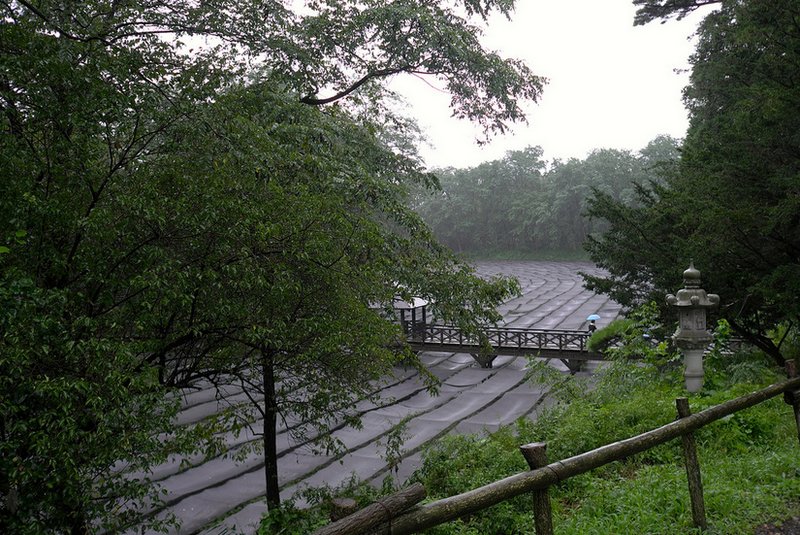
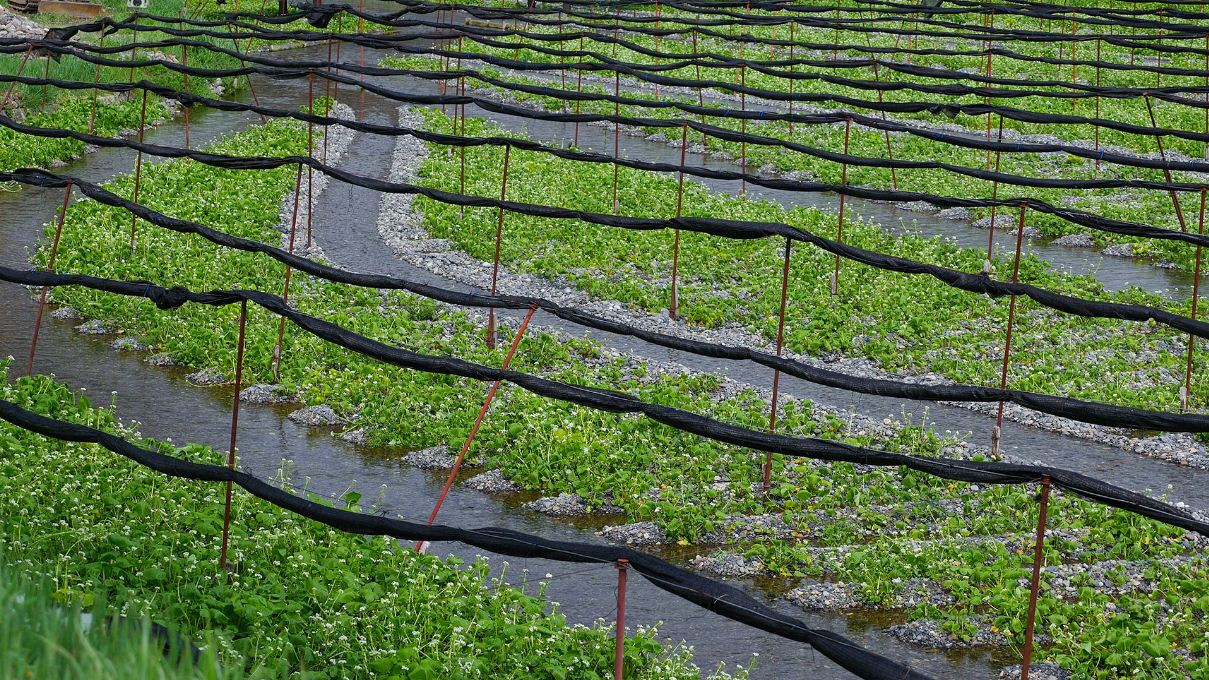
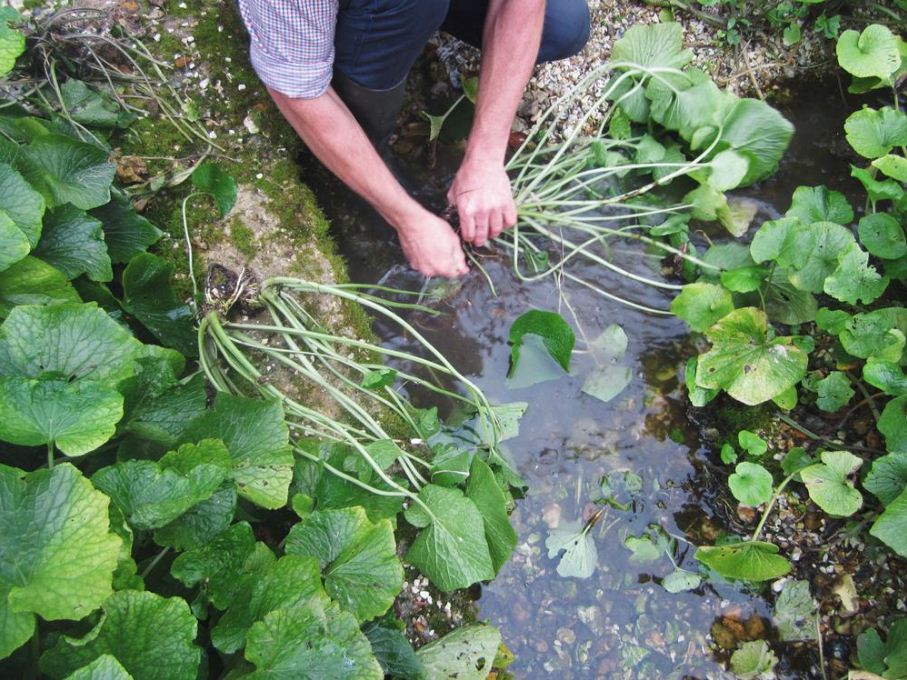
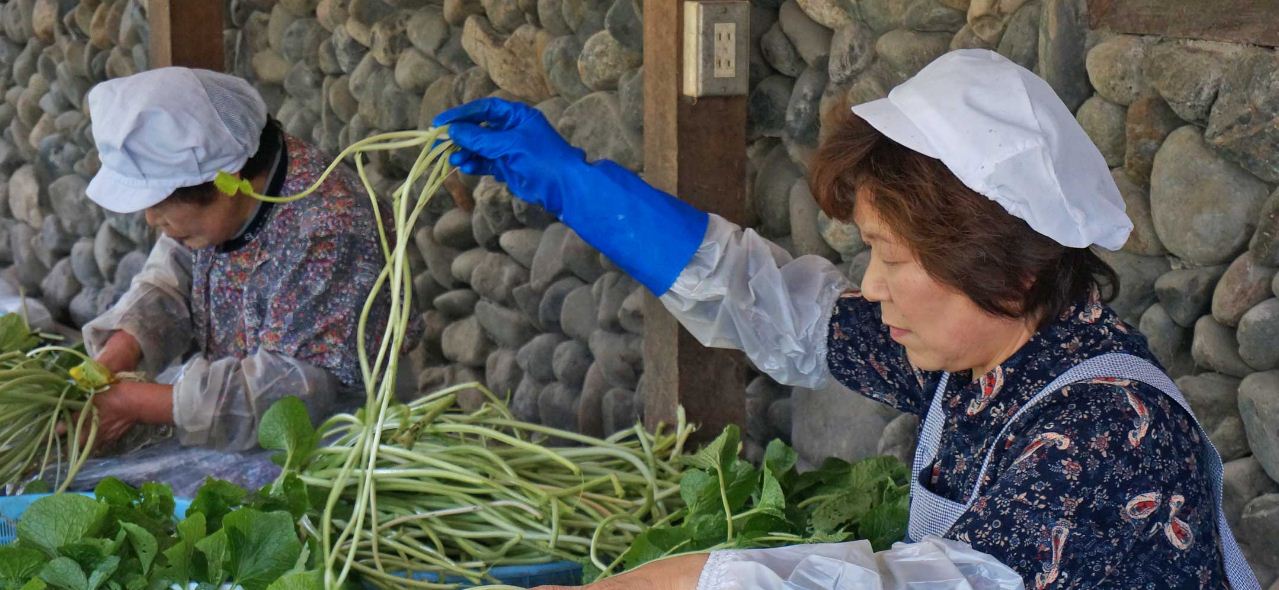
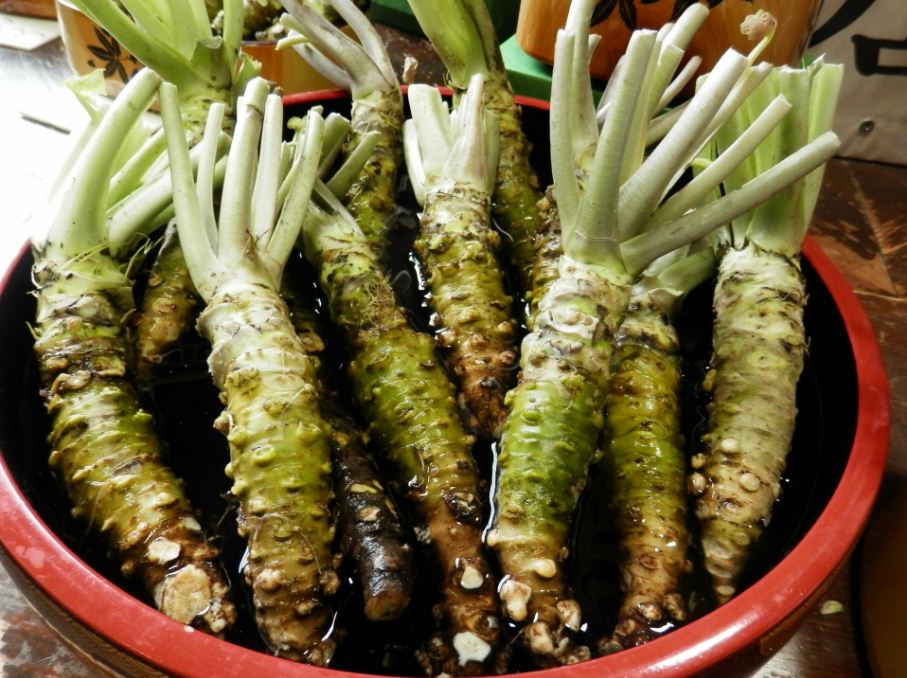
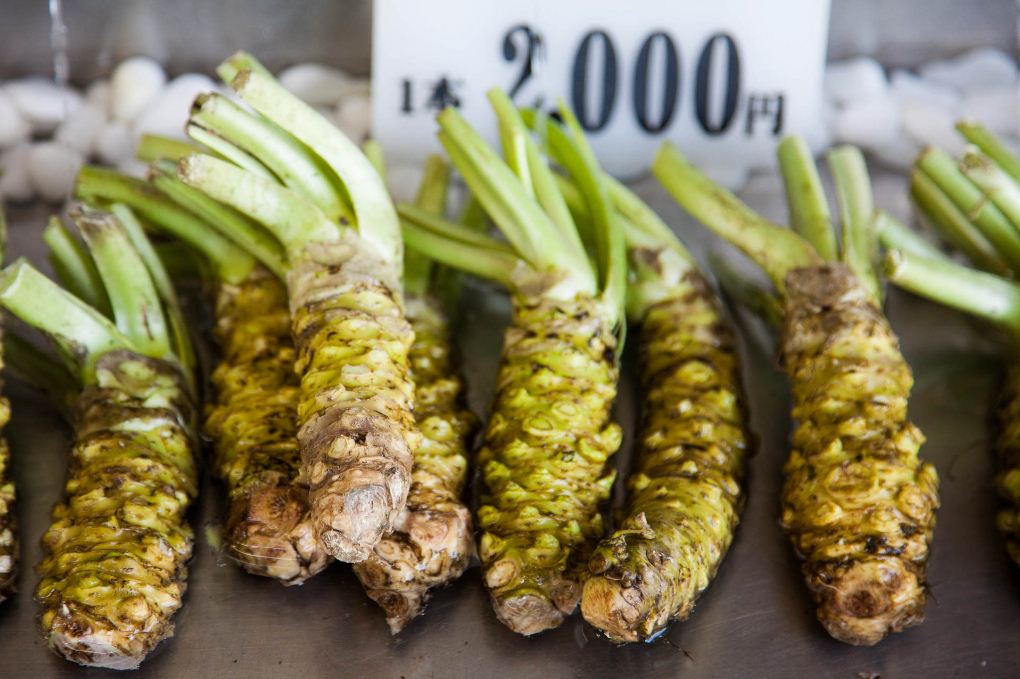
In the Daio Wasabi Farm, visitors can buy products made from Wasabi from shops and restaurants. A wide range of products related to Wasabi, including fresh Wasabi, Wasabi sour, Wasabi crackers, Soba Wasabi noodles, Wasabi curry, Wasabi sausage, Wasabi beer, Wasabi juice, Wasabi soft ice cream, Wasabi chocolate, and many more…
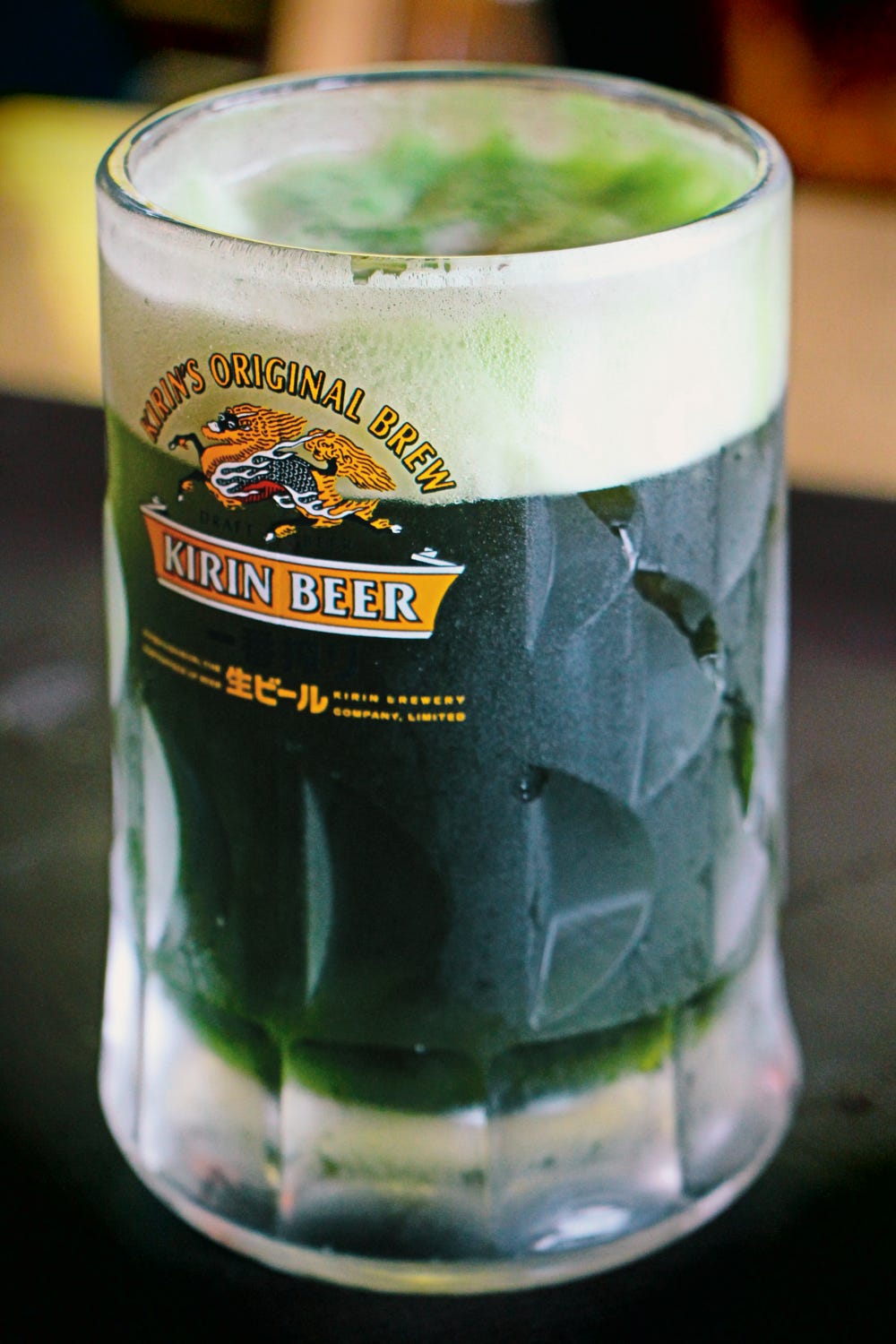
But if you have once come to Daio Wasabi Farm you definitely have to try Wasabidon dish. This is a very simple dish which consist white rice with Wasabi at the top, thinly slices of dried tuna and soy sauce. Wasabi is the main ingredient in this dish, so it will have the pungency of Wasabi. The price of a set of Wasabidon is about 720 yen.
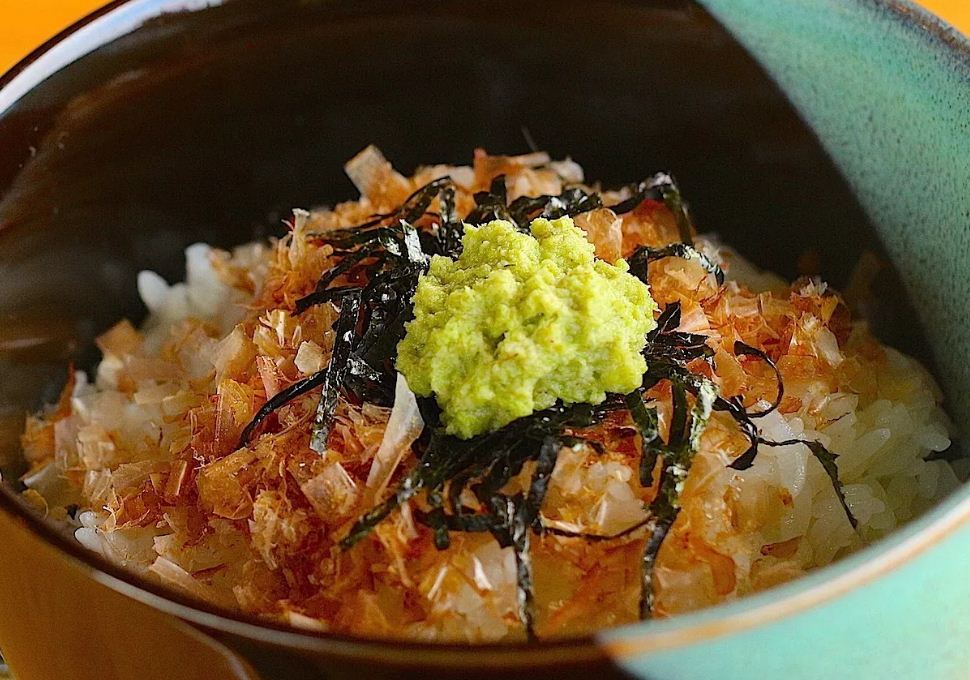
At the Daio Wasabi Farm, visitors also can try salt Wasabi or also known as “Wasabi-duke”. Wasabi-duke has a spicy of chili that blends with the pungent of Wasabi, which is a great snack to drink with alcohol or eaten with rice is also very tasty. In addition, the restaurants also have the Wasabi Korokke dish for those who eat not too spicy, but still gives the feeling of fun when tasted of Wasabi flavor.
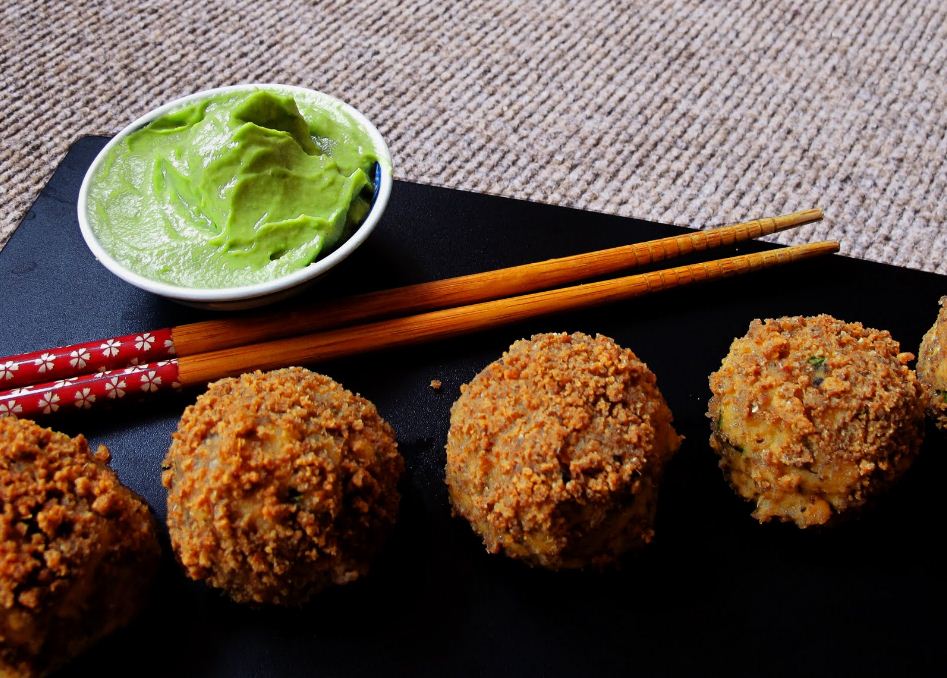
When visiting the Daio Wasabi Farm you will discover that both the roots and leafs of Wasabi plants also can make dozens of other dishes such as: noodles, pickles, snacks, cakes, sweets … and coffee, fruit juice, ice cream. If you taste it, you will immediately be fascinated because they are delicious with an unprecedented taste. As a result, Wasabi ice cream just discoveries recently but the widespread popularity is increasing in Japan.
Other dishes from Wasabi you should try when traveling to Daio Wasabi Farm:
Ice cream: 360 yen; Beer: 520 yen; Fruit juice: 210 yen; Oyaki: 260 yen; Frunkfurter: 310 yen (64,000 dong); Croquette: 210 yen; Croquette burger: 360 yen; Fish sausages: 260 yen; Cake: 330 yen.

Further information
Daio Wasabi Farm
Address: Japan, 〒399-8303 Nagano Prefecture, Azumino, Hotaka, 3640
Phone: +81 263-82-2118
Opening hours: 9:00 to 17:20 (until 16:30 from November to February). No closing days
Admission: Free
Website: http://www.daiowasabi.co.jp/
Facebook: https://www.facebook.com/pages/Daio-Wasabi-Farm/
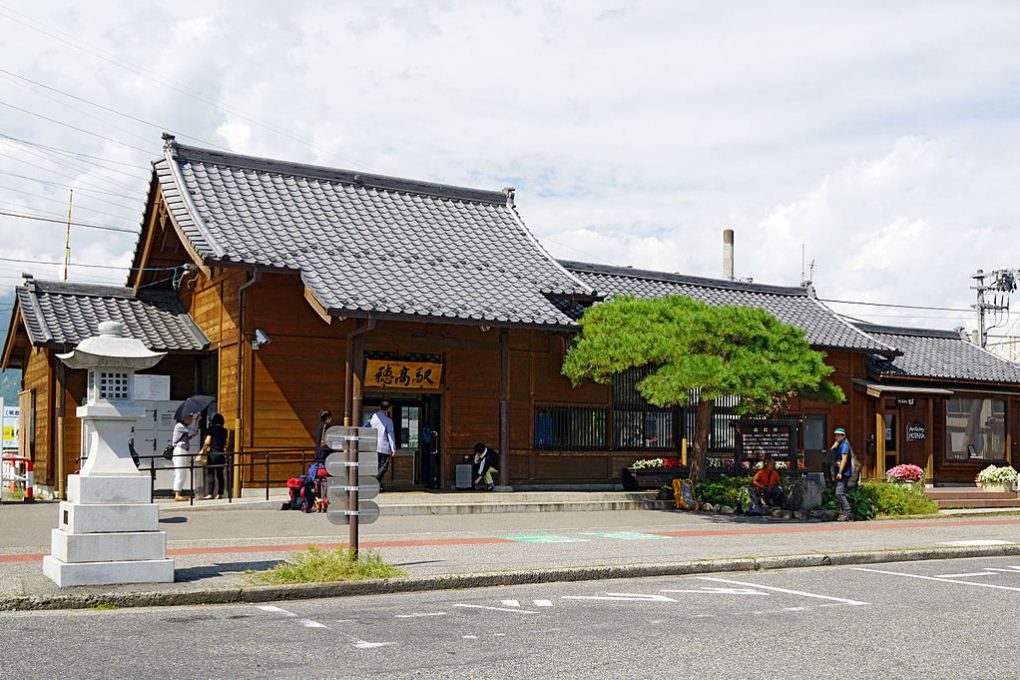
How to get to Daio Wasabi Farm
Wasabi Farm or Daio Wasabi Farm located in Azumino City, Nagano Prefecture, Japan. To get to Azumino, first you must take an express train from Narita Airport to Shinjuku Station, which takes about 1 hour and a half. From Shinjuku, you take an express train to Matsumoto, which takes about 2 hours and a half. Then, a slow train will take you to Hotaka Station in Azumino which takes about 30 minutes. The simple way is to choose a tour that visits Daiso Wasabi Farm.

Some best day tours, trips, activities and transfer services, tickets in, to and from Tokyo you can refer to
- Private Narita International Airport Transfers (NRT) for Tokyo 23 Wards, Hakone, or Karuizawa
- Private Haneda International Airport Transfers (HND) for Tokyo 23 Wards, Hakone, or Karuizawa
- Airport Limousine Bus Transfers from/to Narita and Haneda International Airport (Free Wifi Onboard)
- Tokyo Amazing Sightseeing Bus Day Tour
- Tokyo Highlights Private Day Tour
- Nikko Day Tour from Tokyo
- Mt Fuji & Hakone Day Tour: Lake Ashi & Ropeway Day Trip from Tokyo
- Nikko Cultural Day Tour from Tokyo
- Tokyo Subway Ticket (24, 48, or 72 Hours)
- Tokyo Skyliner and Tokyo Subway Ticket
- Shuttle Bus Transfers (One Way/Round Trip) from Shinjuku/Ikebukuro to Tokyo Disneyland or Tokyo DisneySea
- Tokyo Disney Resort Park Ticket
- Klook Pass Greater Tokyo
- SHIBUYA SKY Ticket
- Warner Bros. Studio Tour Tokyo – The Making of Harry Potter Ticket
- Skyliner Narita Airport Express Ticket
- TeamLab Planets Ticket
- TOKYO SKYTREE® Ticket
- Limousine Bus Narita or Haneda Airport to Tokyo
- Skyliner Narita Airport Express With Tokyo Subway Ticket
- JR Tokyo Wide Pass
- Sky Hop-on and Hop-off Bus Pass
- 4G Prepaid Sim Card (JP Airports Pick Up) for Japan
- 4G WiFi (BKK and DMK Airport Pick Up) for Japan (Unlimited Data)
- JR Pass for Whole Japan (7, 14, or 21 Days)
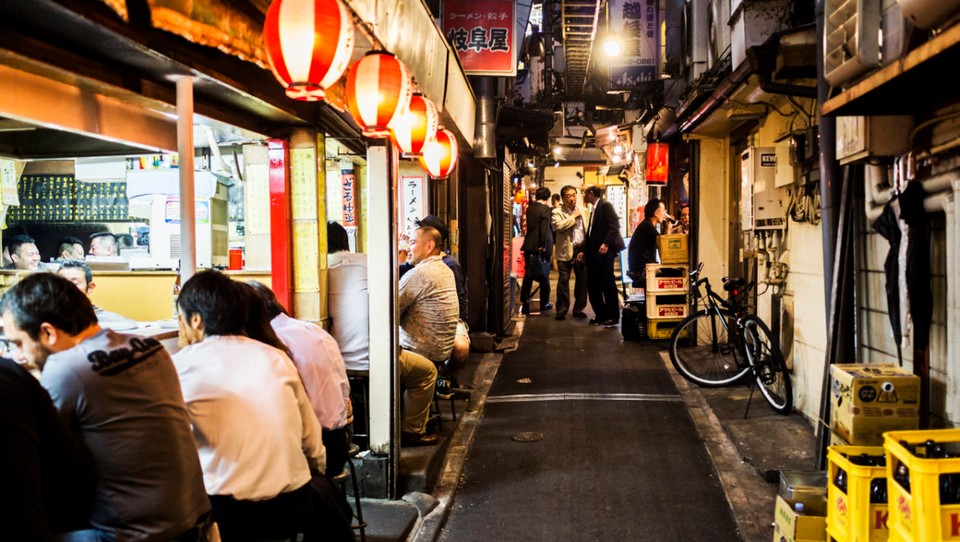
Are you looking for more Tokyo travel guide and top things to do in Tokyo: Tours, activities, attractions and other things? Read more: Tokyo itinerary 3 days — What to do in Tokyo in 3 days?
































![10 best airports in Asia in 2016 [RANKED] kuala-lumpur-international-airport-best airports in asia in 2016 by skytrax ratings](https://livingnomads.com/wp-content/uploads/2016/08/29/kuala-lumpur-international-airport-best-airports-in-asia-in-2016-by-skytrax-ratings-218x150.jpg)








